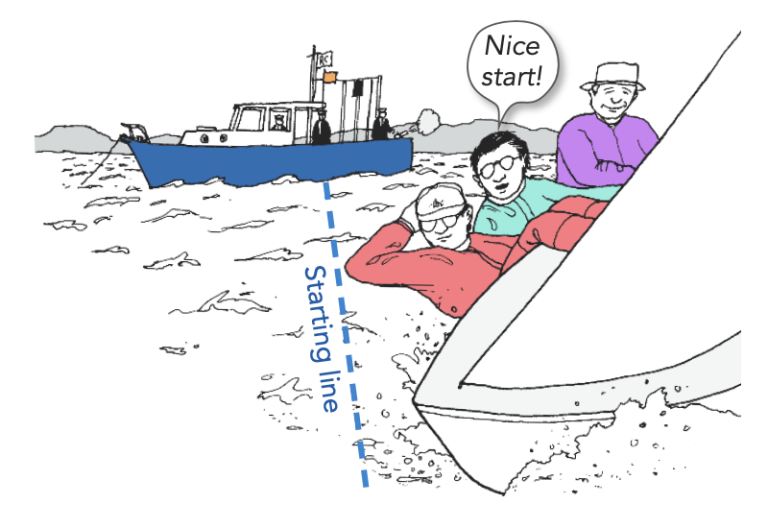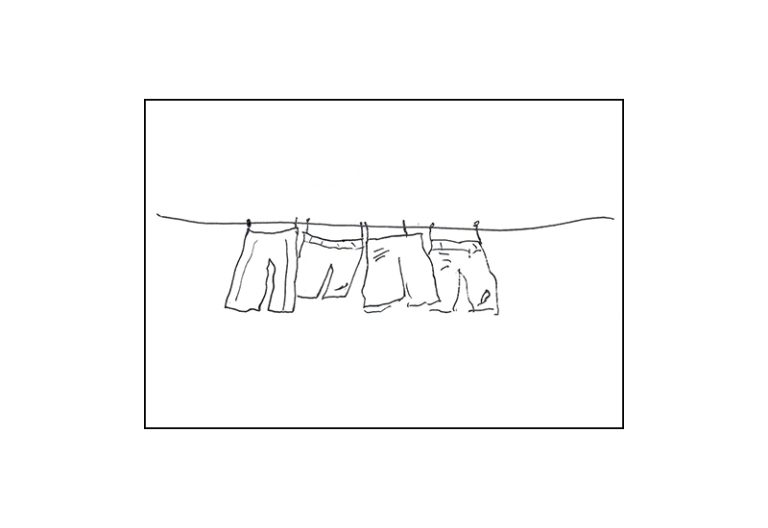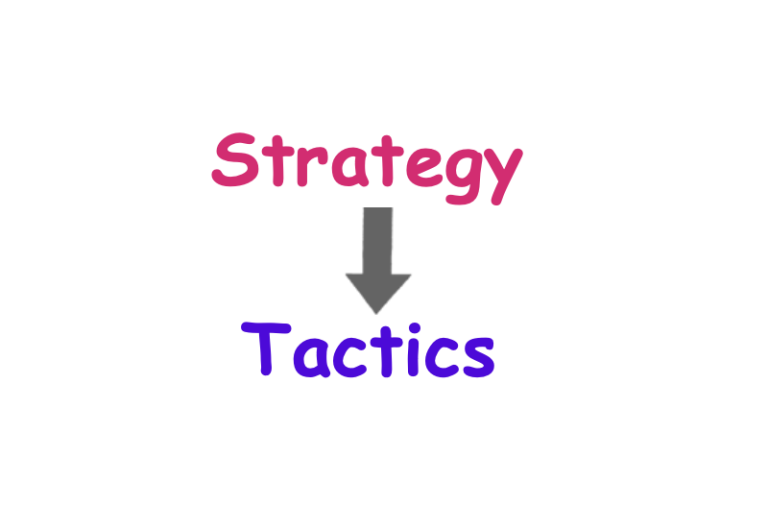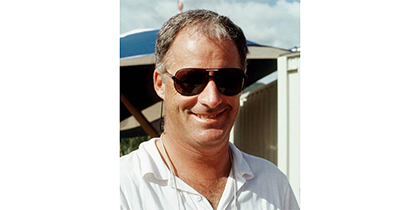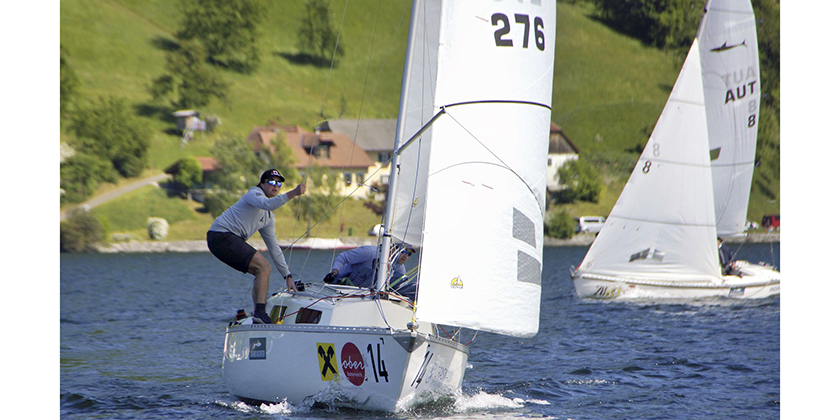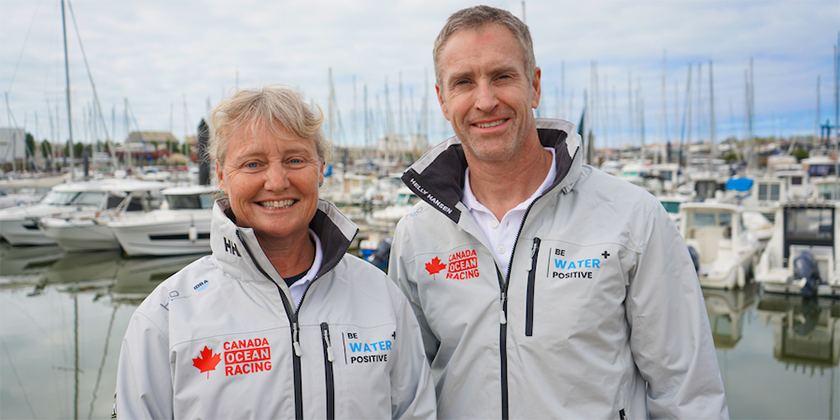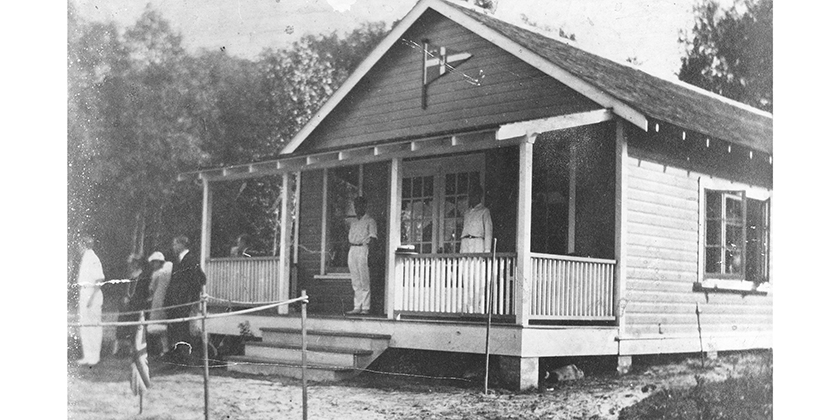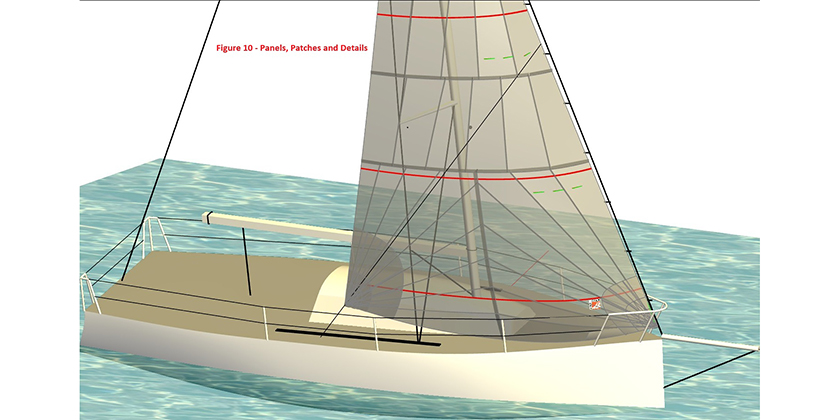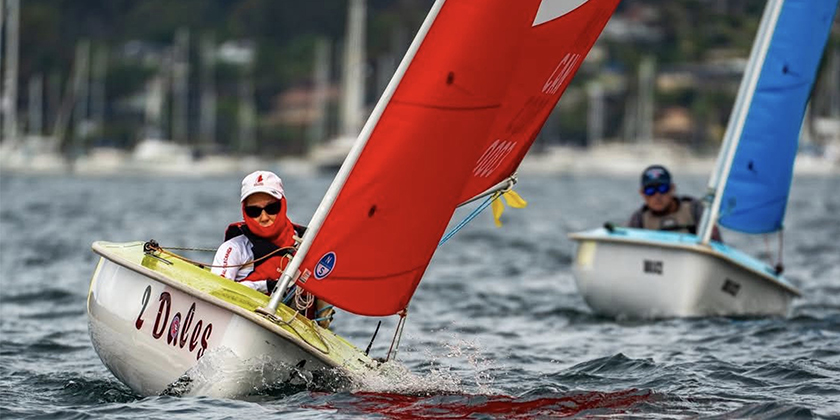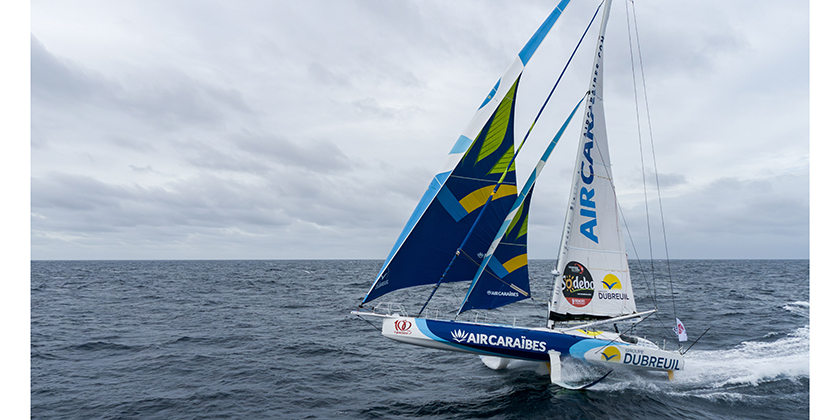Speed & Smarts: MORE Starting Strategy & Tactics – Part 4
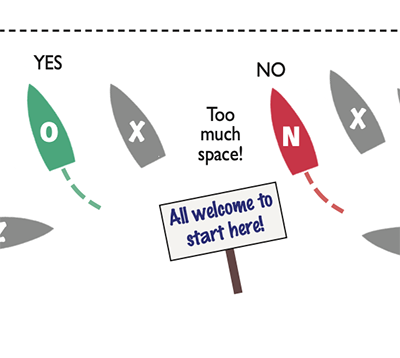
February 1, 2023
Read Part 1 HERE.
Read Part 2 HERE.
Read Part 3 HERE.
Below: Carving out a big hole to leeward when it’s still early in the starting sequence is like posting a neon sign there to attract all the boats (the Zs) that haven’t yet found a place to start.
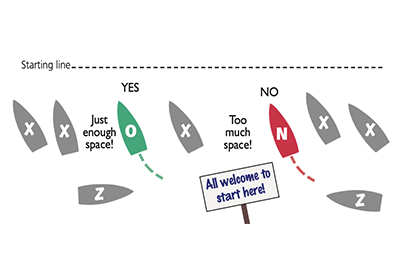
Don’t get greedy
When the starting signal goes off, every boat would like to have a large space to leeward so they can put their bow down without the fear of being pinched off. But this doesn’t mean you want to have such a big hole to leeward throughout the starting sequence.
In fact, trying to guard a big hole can be a bad idea. The critical factor is how much time you have left before the start. If you’re very late in the starting sequence, it’s likely that every boat has their own spot-on starboard tack, and there probably aren’t any boats still looking for holes. That’s when it is good to have a big space to leeward.
But if it’s earlier and there are still boats roaming around behind the front row, a big hole to leeward will attract other boats like moths to a flame. This is when you can’t be greedy, especially if you like your position (and the boat to leeward). Put yourself just far enough from the leeward boat to get a decent start. As you get closer to the gun (and the roamers settle down), try to increase the size of your hole.
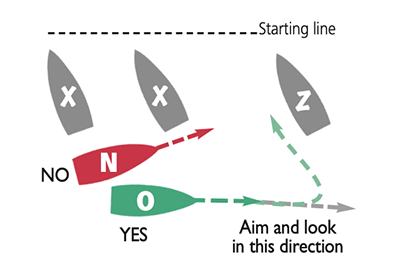 Make a stealth approach
Make a stealth approach
When you are planning to tack close under a luffing starboard tacker, don’t give this away. If you aim directly at them (N), they will bear off at you and make it difficult to get close. Instead, steer a course well behind them (and look straight ahead, not at them) as if you are planning to pass astern. Then make a late tack
when they can no longer aim at you, and cozy up close to their leeward side.
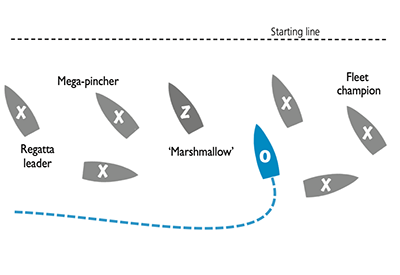 Pick your neighbors carefully
Pick your neighbors carefully
The whole reason for making a port-tack approach is that you can look at the boats that are lining up on starboard and then pick the best place to tack and start. Typically, you choose a spot where there is a nice hole close to your desired starting location. But there is at least one other important consideration – your neighbors!
After you tack, who will be sailing the boat that is just to leeward of you? Will it be the world champion, or the boat that just finished last in the previous race? Obviously your start will have a much better chance of success if the boats near you, especially the one directly to leeward, is slow. So, when you are reaching along on port tack, look not only at where the other boats are, but at who they are.
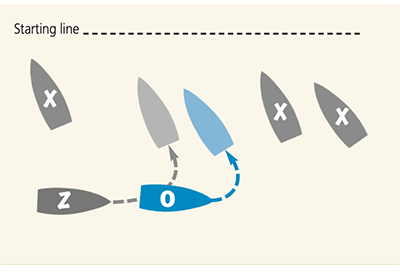 Watch out for boats close behind on port
Watch out for boats close behind on port
A port-tack approach is not a good idea unless you have the option to tack. But sometimes this is not enough. Consider this situation – Boat O is approaching the start on port and can tack whenever she wants. However, Boat Z is following close behind. When O tacks, Z tacks. The boats end up on starboard tack, overlapped close together, with O ‘locked’ to windward of Z. This is a terrible position for O, but there was little she could do to avoid it once she started tacking with Z so close behind.
Before tacking, O should have changed the situation. She could have luffed quickly head to wind, for example, hoping Z would bear off behind her. Then O could have tacked without worrying about Z ending up close to leeward.
 Making your final tack to starboard
Making your final tack to starboard
Boat O is making a good approach because she’s free to tack and the next port-tacker is at least 2 lengths behind her. This means O can tack without having Z tack right underneath her. However, if O simply tacks to leeward of Y and stays head to wind (red option) it will be easy for Z to do the same thing and O will be locked to windward.
To prevent this, O should turn almost 180° when she tacks. She needs to make a quick turn (green option) that ends with her aiming almost directly at Z (note she must give Z room to keep clear). This forces Z to make a choice – she can either tack early to starboard or bear off and go past O; both are good for O. One more thing: After O tacks she wants to end up close to leeward of Y. If she is going to turn 180°, she has to go a little past Y before she tacks; otherwise she’ll end up too far from Y.
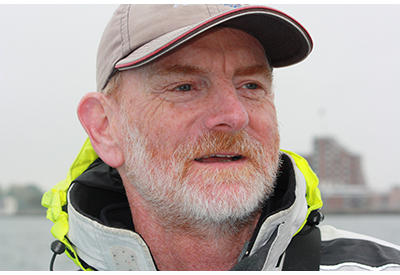 Dave Dellenbaugh is the publisher, editor and author of Speed & Smarts, the racing newsletter. He was the tactician and starting helmsman on America3 during her successful defense of the America’s Cup in 1992 and sailed in three other America’s Cup campaigns from 1986 to 2007. David is also two-time winner of the Canada’s Cup, a Lightning world champion, two-time Congressional Cup winner, seven-time Thistle national champion, three-time Prince of Wales U.S. match racing champion and past winner of the U.S. Team Racing Championship for the Hinman Trophy. He is currently a member of the US Sailing Racing Rules Committee (and was its chairman from 2005-2008).
Dave Dellenbaugh is the publisher, editor and author of Speed & Smarts, the racing newsletter. He was the tactician and starting helmsman on America3 during her successful defense of the America’s Cup in 1992 and sailed in three other America’s Cup campaigns from 1986 to 2007. David is also two-time winner of the Canada’s Cup, a Lightning world champion, two-time Congressional Cup winner, seven-time Thistle national champion, three-time Prince of Wales U.S. match racing champion and past winner of the U.S. Team Racing Championship for the Hinman Trophy. He is currently a member of the US Sailing Racing Rules Committee (and was its chairman from 2005-2008).
You can subscribe to the Speed & Smarts newsletter HERE.

